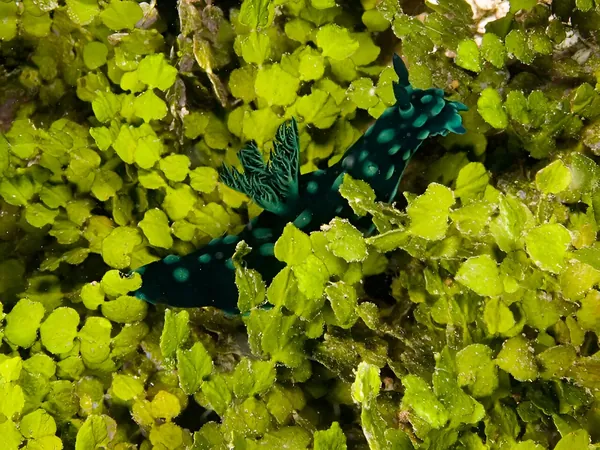
Surprising Secrets of a Unique Algae: What It Reveals About Climate Adaptation and Reef-Building
2024-10-09
Author: Noah
Introduction
In a groundbreaking study, a team of researchers led by Professor Senjie Lin from the Department of Marine Sciences has sequenced the genome of Halimeda opuntia for the first time, uncovering astonishing insights into this fascinating algal species. Their findings, published in the prestigious Proceedings of the National Academy of Sciences, shine a light on the crucial role this peculiar algae plays in tropical marine ecosystems and its remarkable adaptations to changing environmental conditions.
Unique Characteristics of Halimeda opuntia
Halimeda opuntia, often referred to as the cactus algae due to its distinctive shape, is extraordinary for its size and cellular structure. Unlike typical single-celled organisms that possess only one nucleus, H. opuntia comprises a single cell with multiple nuclei and can grow up to a foot long. This unique arrangement is vital for understanding H. opuntia’s role in the reef-building process, a task it accomplishes differently than traditional corals.
Genomic Insights into Evolution
Professor Lin and his team aimed to comprehensively understand how H. opuntia has evolved its unique characteristics through genomic analysis. 'We achieved high-quality sequencing and reconstructed the structures of the chromosomes, allowing us to identify the functions encoded in the genome,' Lin explains. The research revealed that while most organisms are classified as either unicellular or multicellular with a single nucleus, H. opuntia exists in a category all its own.
Absence of Myosin VIII
One of the fascinating discoveries was the absence of a specific gene responsible for a protein essential for positioning cellular components before division, raising questions about the algae’s growth mechanism. 'We found that H. opuntia possesses all types of myosins except for myosin VIII, suggesting that the lack of this particular protein is fundamental to the development of its intricate cellular structure,' Lin notes.
Evolutionary Adaptations and Climate Change
Additionally, the researchers explored the evolutionary backdrop of these genomic traits and their relation to climate fluctuations. They discovered that the H. opuntia genome underwent duplication events parallel to significant changes in sea levels and climate, hinting that these adaptations may have arisen as a survival strategy in the face of environmental stressors.
Calcium Processing and pH Stability
The study also highlighted H. opuntia's unique method of processing calcium from its surroundings, which contrasts sharply with corals and bivalves. Instead of calcifying within their cells, H. opuntia creates calcium carbonate structures externally in a designated area known as the interutricular space. This adaptation could be crucial in today’s increasingly acidic oceans, as the algae's process may help stabilize local pH levels, aiding in calcification amid changing environmental conditions.
Regenerative Abilities
Further investigation into the genome revealed similarities to plant wound healing processes, indicating that H. opuntia has evolved a molecular toolkit for regeneration. This capability might also play a role in its reproduction, as fragmented pieces of the algae can develop into fully-formed individuals.
Implications for Future Research
The implications of this research stretch beyond the realm of marine biology. Professor Lin is optimistic about future studies and their potential relevance to coral conservation and possibly even advancements in medical science, particularly in tissue regeneration. 'Much remains to be uncovered, especially considering the urgency of climate change. Determining whether H. opuntia maintains a consistent cell size-to-genome size ratio or if different nuclei serve varied functions will be crucial next steps,' Lin states.
Conclusion
As the effects of climate change ripple through ecosystems worldwide, the evolutionary insights gained from Halimeda opuntia could pave the way for enhanced understanding of adaptability in marine organisms. With many questions left to address, this remarkable alga opens a window into a world of possibilities for both environmental conservation and scientific advancement.









 Brasil (PT)
Brasil (PT)
 Canada (EN)
Canada (EN)
 Chile (ES)
Chile (ES)
 España (ES)
España (ES)
 France (FR)
France (FR)
 Hong Kong (EN)
Hong Kong (EN)
 Italia (IT)
Italia (IT)
 日本 (JA)
日本 (JA)
 Magyarország (HU)
Magyarország (HU)
 Norge (NO)
Norge (NO)
 Polska (PL)
Polska (PL)
 Schweiz (DE)
Schweiz (DE)
 Singapore (EN)
Singapore (EN)
 Sverige (SV)
Sverige (SV)
 Suomi (FI)
Suomi (FI)
 Türkiye (TR)
Türkiye (TR)